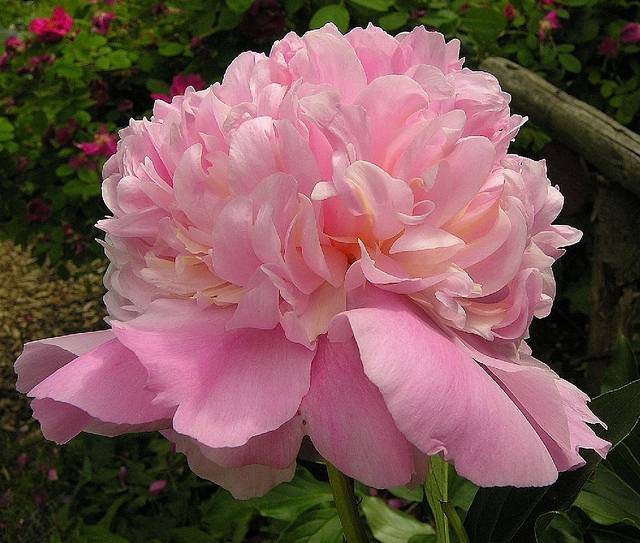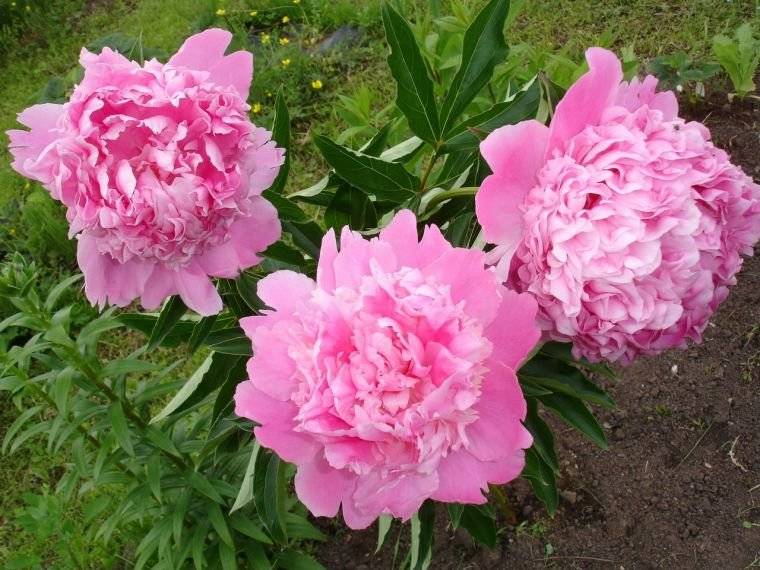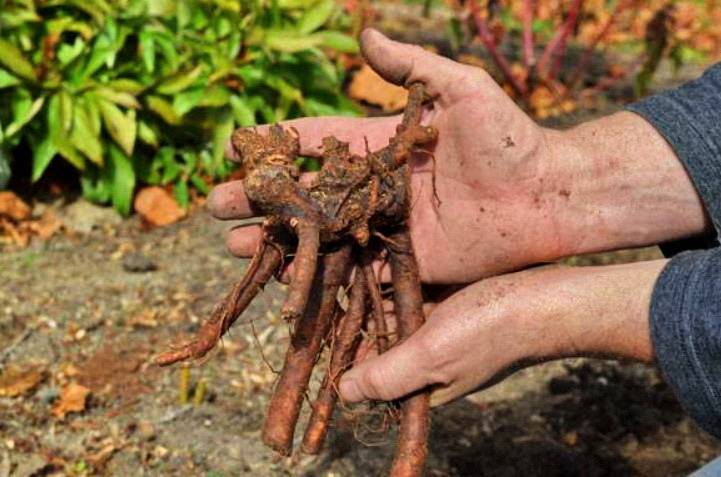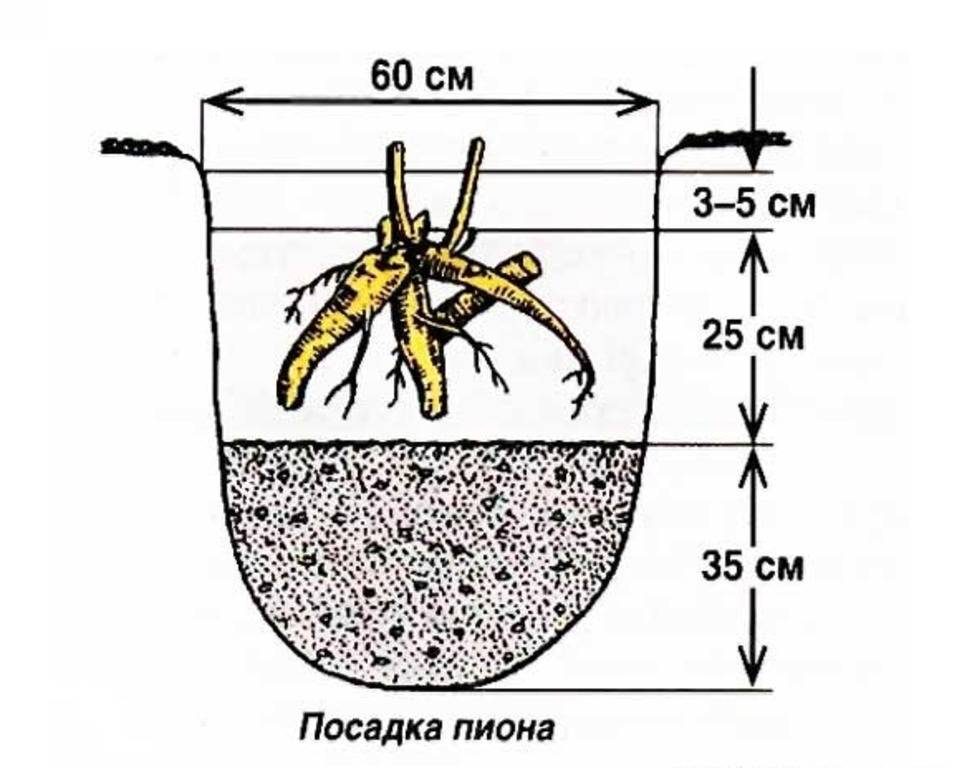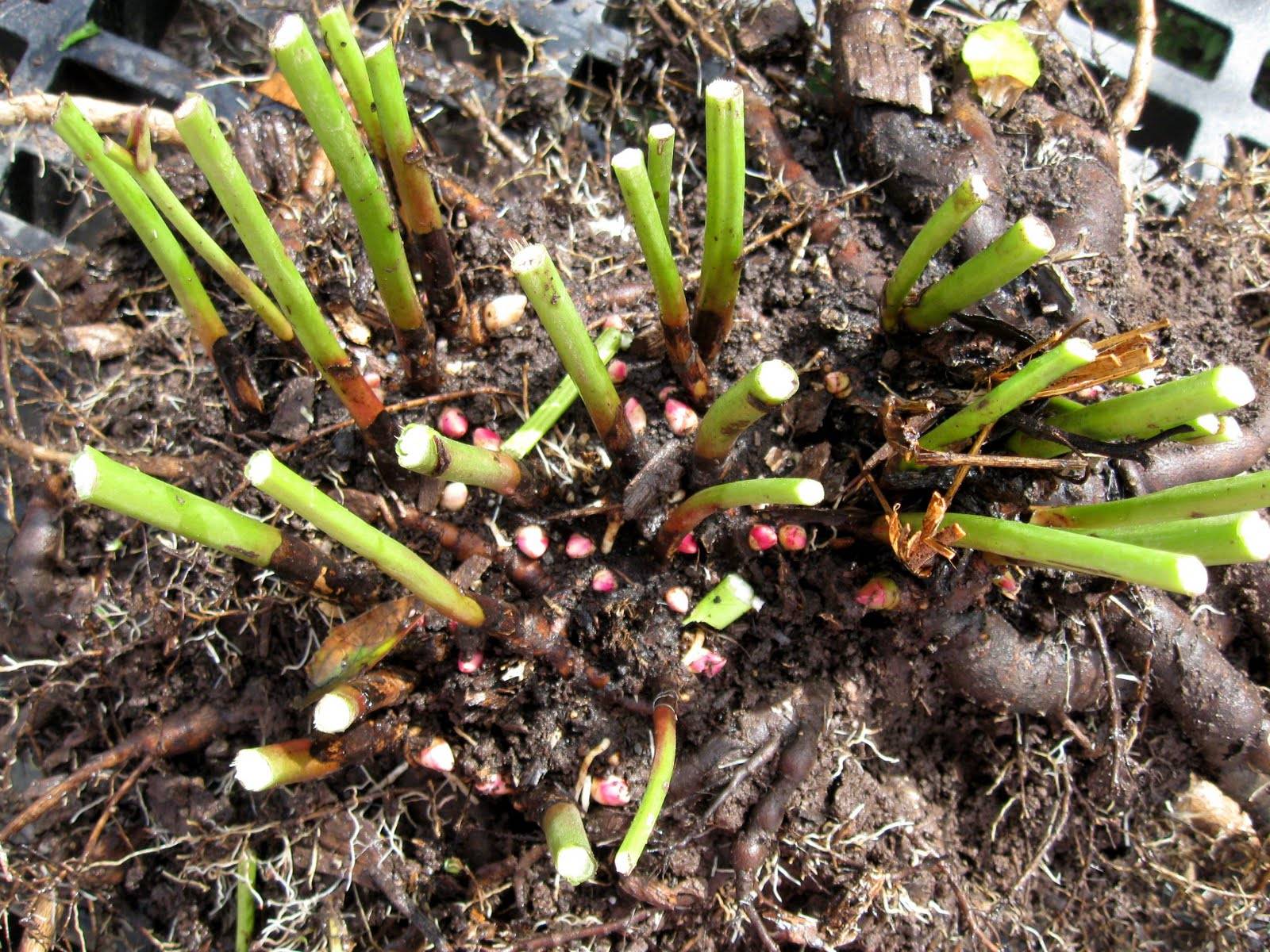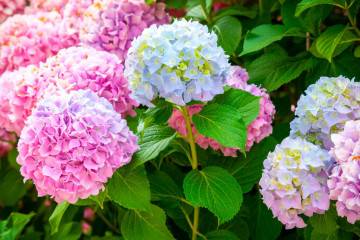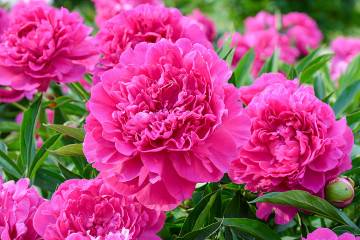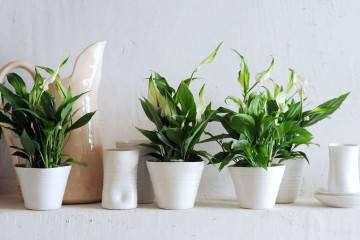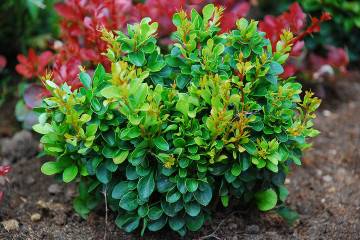Peony Monsieur Jules Elie (Paeonia Monsieur Jules Elie)
Content:
Paeonia Monsieur Jules Elie is a flower that many gardeners want to take possession of. It is perfect for site decoration and cutting. Unpretentious care also makes Monsieur Jules Elie's peonies desirable.
Peony Monsieur Jules Elie (Paeonia Monsieur Jules Elie) - what is this variety
From the name of the peony Mons jules elie, you can guess that it has French roots. The variety was bred in 1888. It is a milk-flowered peony, which belongs to herbaceous perennials.
Brief description and characteristics
Shrub Monsieur Jules Elie is quite small, can reach up to 1 m in height. Branches are erect, branched and strong with matte dark green foliage. Against their background, pink terry inflorescences in the form of a bomb look especially attractive. The diameter of the buds fluctuates around 20 cm. The lower petals of the bud are large enough, slightly bent. The central ones are bent inward and smaller.
Advantages and disadvantages of the variety
Among the advantages of the plant are the following:
- high frost resistance;
- high immunity;
- unpretentiousness;
- high decorativeness;
- suitable for both cutting and site decoration.
The peony Mons Jules Ely has a lot of advantages that the only drawback cannot cross out. It consists in the fact that in the shade of flowering, you can either not wait at all, or the flowers will become much smaller. Dealing with this is quite simple - use another place for planting.
Use in landscape design
Shrubs are used mostly in the garden or flower garden. They go well with aromatic herbs or cereals. The plant can decorate the gazebos, the entrance to the room. However, the Julie El peony can be useful for the formation of bouquets.
Growing a flower
The cultivation of this variety of peonies can be done by gardeners of any level, since it is quite simple. It is recommended that you remember a number of basic rules that will help you grow a high quality plant.
Planting by root cuttings
A root cut is usually called a part of the root system with a growth bud and root. They are harvested before the formation of white roots. You can start planting cuttings in early August. To do this, you should:
- Dig out the rhizome of the peony, remove the soil, remove the rotten and dried roots.
- Divide into as many cuttings as possible (each should have a bud and root).
- Soak the cuttings in potassium permanganate for 2 hours. Treat the cut sites with charcoal.
- Plant in a substrate at a distance of 18 cm from each other.
It is recommended to dig up peonies in order to replenish the stock of cuttings in the second half of August. It is worth planting either in September or early October.In this case, the seedlings are more likely to take root and survive the winter.
Seat selection
The choice of location is an important nuance for many colors. Peony Monsieur Jules Elie is no exception. It is recommended to plant it either in sunny areas or in partial shade. An absolute shadow can negatively affect flowering - it will not. However, when planting in the sun, it is advisable to find a way to shade the plant during particularly hot hours.
How to prepare the soil and flower for planting
The soil for growing this variety of peony should be light, good for air and water, and also be fertile. The best option is to choose loam. It is recommended to choose neutral acidity, since the peony does not like acidic soil. For the manufacture of the substrate, it is recommended to take peat, sand, humus and garden soil in equal proportions and mix thoroughly. It is also worth adding a small amount of woody soil and mineral fertilizers to it.
Depending on the method of reproduction of the plant, the flower is prepared in a certain way. If we are talking about seeds, then it is worth following the rules of artificial stratification, if about root cuttings, disinfection with potassium permanganate and charcoal is necessary. The treatment with a root formation accelerator remains the same.
Planting procedure step by step
There are not so many landing rules so that you can make a mistake at least at some stage.
- It is worth digging a hole 60-70 cm deep and 1 m in diameter in advance. This is required so that the roots of the plant can spread without problems.
- If the soil is acidic, liming is necessary, if loose, you will have to add humus, dense - add sand, if the groundwater is close to the ground, it is worth filling the drainage at the bottom of the hole.
- Fill the hole in half with the prepared substrate, place the seedling, gently straightening its roots. The renewal bud should be approximately 5 cm above ground level.
- Drizzle.
The procedure is simple, and therefore even a novice gardener can cope with it.
Seed planting
The seed method of growing peonies is used either for selection or for obtaining a large number of plants. This method has a number of disadvantages: flowering can be delayed for 3-7 years, only about a third of purchased seeds can emerge. If it is impossible to use other options for one reason or another, it is recommended to follow the step-by-step instructions.
When buying seeds, you need to pay attention to their appearance. If they are shriveled, then it is better not to buy them, and from shiny and smooth ones, a real plant can turn out. First of all, it is recommended to hold the seed in warm water for 24 hours, and then soak it in a solution of potassium permanganate for a few more hours. Subsequently, it is recommended to treat the seeds with a growth stimulant.
First, you need to plant them in a container, and after the first shoots appear, transplant them into open ground. In this case, artificial stratification is needed. This is done in the following way: the seeds are sent at the end of April to the freezer for a couple of months.
At the end of June, it is worth pulling them out and planting them in the ground, sending the container with them to the windowsill. The boxes with seeds should be taken out into the garden and covered with spruce branches for the winter. In the spring, sprouts should hatch from the seeds, which should be planted in the garden.
Plant care
Herbaceous peonies are unpretentious plants. For some species, you can practically not take care of at all. Monsieur Jules Elie is more demanding than them, but even he is not so selective about soil, pests and bacteria, as well as watering.But in order to wait for a beautiful flowering, it is recommended to follow certain recommendations.
Watering and feeding
Peony Monsieur Jules Elie needs regular watering - 1-2 times a week, 1.5-2 buckets per bush. It is recommended to use well-settled warm water, as cold and hard water can lead to a deterioration in the well-being of the flower.
Mulching and loosening
Mulching and loosening are important steps in plant care. They need to be produced in order to keep the earth moist for a long time, but at the same time not to weigh it down. Loosening is worth 2 times a month after watering. It is also worth removing all the weeds while doing this. Mulching is done with compost, dry grass or sawdust.
Preventive treatment
Herbaceous peonies can suffer from diseases despite being highly resistant to some species. To avoid this scourge, it is recommended 2-3 times a season to treat the bushes with Bordeaux liquid, copper oxychloride or foundation. These preparations contain copper, and therefore can be used for medicinal purposes.
Peony Blossom Monsignor Jules Elie
The peculiarity of this variety of peony is its flowers. Any florist who has taken up the cultivation of a crop wants to see them in early summer. However, this is not always possible, and therefore it is worth knowing what methods will help prevent the death of the plant.
A period of activity and rest
The flowering of the peony variety Monsieur Jules Elie begins in early summer. This is a long time, there are a lot of flowers, they are lush. The dormant period begins with the arrival of winter. The plant is characterized by increased frost resistance, can withstand temperatures up to -40 ° C.
Care during and after flowering
Both during flowering and after it, the peony needs additional feeding. However, they are used differently depending on the purpose of their introduction. In summer, fertilizers are recommended for tying buds, and in autumn - to maintain immunity and prepare for wintering.
What to do if it does not bloom
The most common reasons for not blooming are:
- wrong landing depth;
- wrong location;
- old age;
- small divisions when planting;
- frequent transplant.
Depending on the reason, the solutions may be different. It is required to pay attention to the proper care of the plant, where and how it needs to be planted, so as not to interfere with growth and flowering.
Peonies after flowering
After flowering, the plant needs some care. There are also a number of procedures that can be performed only when the flower has faded.
Transfer
Herbaceous peonies can grow in one place for a long time. As with any other flower, transplanting is a stressful event in their life, and therefore it is recommended to make it as little as possible. If this cannot be avoided, then it is worth performing the procedure in late summer and early autumn immediately after flowering.
Pruning
In late autumn, before sending the plant for the winter, it is required to prune it. This procedure is carried out in order to prevent freezing of young shoots. Despite the frost resistance of the flower, it should be prepared for this time of year.
Preparing for winter
It is recommended to cover small hemp that remained after pruning the plant. This can be done with dry foliage or soil, as well as compost. In the northern regions, for these purposes, you can choose spruce branches or special insulation.
Diseases, pests and ways to control them
Most dangerous for Monsieur Jules Elie is gray rot. It appears more often than other diseases on this peony and affects everything: leaves, inflorescences, stems. As it develops, you can observe a gray bloom on the bush, which is mold. Sick areas need to be cut and destroyed. After flowering, it is worth doing a strong pruning. In the spring, treatment with Bordeaux liquid 1% will be required.
The description of the flowering of a peony of this variety will not impress as much as seeing the buds with your own eyes. Monsieur Jules Elie is not considered a capricious variety, and therefore both a professional gardener and a beginner can start growing it.
